We hope that each of you, our readers, will enjoy and appreciate this article we present about these 4 Awesome Australian Butterflies. It was certainly our pleasure to compile the information for you. May it provide you with both education and increased awareness.
These few species listed herein represent only a portion of the natural wonders found throughout the region, though. Yet, it’s our belief that they serve as excellent representations of the marvels found here. Check out some of our other articles for similar marvels.
Australian Painted Lady
Australian Painted Lady Facts
- Leading off this article about these 4 Awesome Australian Butterflies is the one that even has the term in its name, the Australian Painted Lady.
- This gorgeous Lepidoptera is most frequently referred to by the informative common name used here for the obvious reasons. It does have other general names, though. Those include such diverse terms as the Cosmopolitan and the Thistle Butterfly.
- Within scientific circles, however, it’s much known better by its formal title. Thankfully, that’s an extremely easy title for the layperson to pronounce. That’s because this marvel of Nature and evolution bears the official moniker of Vanessa kershawi.
- It received that name due to the efforts of the Irish zoologist, Sir Frederick McCoy. The noted professional made the first formal acknowledgement of it as a separate and distinct species. That scientifically noteworthy even occurred in 1868.
- It often serves as a source of confusion and conflict among entomologists. That’s true since it’s extremely similar to a much more widely spread species. Many researchers believe it should be considered as only a subspecies of that better-known insect.
- The beautiful Australian Painted Lady appears to be maintaining a population base that’s both stable and sufficient. That pleasant also seems to hold true throughout the entirety of its range. The IUCN, therefore, presently has no listing for it on the Red List.
- It nevertheless faces several possible threats to its existence. In this, it follows the pattern of most species. The majority of these perils stem from the actions of humans. They include such dangers as habitat loss and the increasing effects of climate change.
Australian Painted Lady Physical Description
The visually stunning Australian Painted Lady is a wonder of Nature that capture one’s interest easily. It does so primarily due to its appearance, though. That’s because, all other marvelous aspects aside, it ranks as an approximately average-sized butterfly species.
Interestingly, it differs from many, though not all, related invertebrates. That’s true since it displays no noticeable degree of the physiological characteristic of sexual dimorphism. This results in it being extremely difficult for non-experts to distinguish the genders.
Individuals of both sexes attain an average wingspan of roughly 2 in (5 cm). This actually makes it slightly smaller than the very similar species sharing the same range that leads to the previously mentioned issue. It’s among the main reasons some consider it separate.
The elongated body of this remarkaable Lepidoptera shows entirely an extremely dark brown, almost black. Uniquely, though, the tips of the antennae display a bright white at the tip. Like many related creatures, that body possesses a covering of fine, soft hairs.
It’s the wings of the Australian Painted Lady that garner the most appreciation, however. The background color consists of a brown shade. This, though, turns to a brick-red shade, crossed by black bands. Its forewings show black, with four white dots and a white bar.
Meanwhile, the hindwings present four round eyespots at the base. These also show a blue center for several. The underwings of the insect, though, display an almost identical pattern. However, the base of the underwings show a brick red color, instead of the brown.
- Kingdom: Animalia
- Phylum: Arthropoda
- Class: Insecta
- Order: Lepidoptera
- Family: Nymphalidae
- Genus: Vanessa
- Species: V. kershawi
Australian Painted Lady Distribution, Habitat, and Ecology
The startling beauty known as the Australian Painted Lady evolved as native to a somewhat limited section of the globe. That immediate likely won’t surprise anyone, given its name. That’s because, as that name implies, it’s mainly native to the continent of Australia.
Yet that’s not the sole location for this winged wonder. Perhaps riding the prevalent westerly winds of the region, it’s also present on several islands in the area. Most prominently, that includes New Zealand. It’s currently unknown if the insect ever appeared anywhere else.
This impressive invertebrate evolved very generalized habitat requirement. Essentially, it appears anywhere in its range with the proper conditions. Primarily, this consists of the presence of large quantities of plants with nectar producing blooms to feed on.
Intriguingly, in heavily populated areas, this often consists of backyard gardens and parks. This occurs due to the fragmentation of their natural feeding grounds by human urbanization. Away from such areas, however, it often frequents sites such as open meadows.
The Australian Painted Lady possesses an ecology very similar to related species. Very often the same plant serves as food for the adult, and host plant for the larvae. Common examples include such plants Banskia, Bottlebrush, Native Finger Lime, as well as Eucalyptus.
Following mating, the females lay their eggs on appropriate foliage, usually in the center of the leaf. These hatch in as little as three days. The caterpillar is only active at night, and spends most of its time feeding. The entire lifecycle of the insect averages 53 days!
Monarch Butterfly
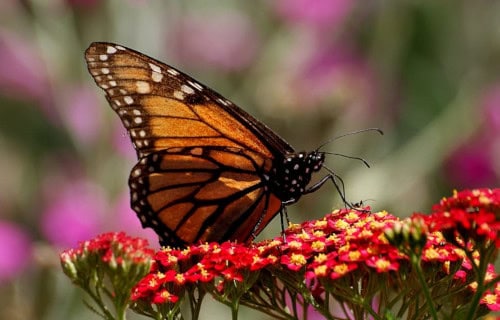
Monarch Butterfly Facts
- The next creature appearing in this collection of 4 Awesome Australian Butterflies is the stunning insect named the Monarch Butterfly.
- This breathtaking creation of Nature and evolution most frequently goes by the well deserved name listed herein. It has other less often used titles, though. These include such terms as common tiger, wanderer, and black-veined brown.
- Inside of scientific communities, however, it’s better known by its official moniker. Fortunately for the layperson, that’s a comparatively simple title, as such things go. That’s because this marvelous Lepidoptera bears the official name of Danaus plexippus.
- The invertebrate received that name due to the efforts of the esteemed Swedish zoologist, Carl Linnaeus. He recorded the first recognition of the creature as a separate and distinct species. The researcher accomplished this feat in the year 1758.
- A total of three species actually bear the same general appellation. The specific one referred to in this article, though, is the best known and most commonly referred to. A total of six acknowledged subspecies of the insect also exist across the globe.
- The gorgeous Monarch Butterfly inhabits a moderately large range. It also engages in impressive seasonal migrations. Sadly, the amazing beauty now finds itself in danger. Accordingly, the IUCN thus lists it as Endangered on its Red List of Threatened Species.
- It now faces many threats to its existence. That’s true in both short and long term. Most of these, though, stem from human activities. Human herbicide use has killed much of its food source. It also now faces the same threat of climate change as we all do.

Monarch Butterfly Physical Description
The captivating Monarch Butterfly fully merits appreciation by those who encounter it. Unlike some of its many relatives, though, it does so for several reasons. Its sheer beauty certainly qualifies as one factor. Yet it also boasts some impressive statistics in terms of size.
It does follow one pattern that’s common among its kind, as well. That’s due to the fact that the insect displays a degree of sexual dimorphism. In its case, this physiological trait manifests itself in terms of both size and appearance. As the name implies, its regal.
Physically, males of the species attain a slightly greater wingspan than their female counterparts. But they also display a small difference in terms of appearance. It’s a very minor one, though. On one vein on each hindwing of the males, a tiny black spot displays.
Otherwise, the two genders of the Arthropod present a very similar structure. The wings of both sexes reach an average width of approximately 3.5 – 4 in (8.9 – 10.2 cm). The body, meanwhile, develops as elongated, mostly black, except for a few white spots on the head.
It’s the wings of the aptly-named Monarch Butterfly that garner the most attention, however. The uppersides typically present a tawny orange hue. The many veins of the wings also show black, along with their margins. Two series of small white spots also line those edges.
The forewings additionally show small orange spots near the tips. The undersides displays similar, but not identical patterns. Their hindwings are yellowish brown, with larger white spots. Its forewings also manifest the same yellowish-brown color on their tips.
- Kingdom: Animalia
- Phylum: Arhropoda
- Class: Insecta
- Order: Lepidoptera
- Family: Nymphalidae
- Genus: Danaua
- Species: D. plexippus
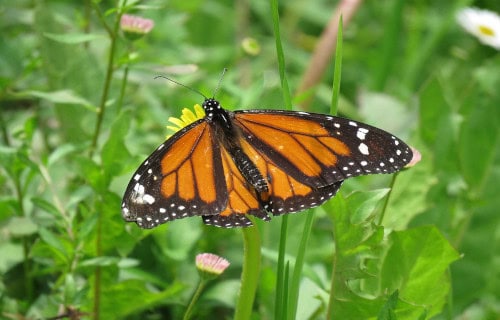
Monarch Butterfly Distribution, Habitat, and Ecology
The stunning Monarch Butterly evolved as native to a relatively broad swathe of the world. The sheer scope of that range might surprise some people, though. That’s true since this insect marvel appears in parts of both the Northern and Southern Hemispheres.
Part of that extends from southern Canada, in North America, to southern South America. It’s also found in Hawaii, Bermuda, the Cook Islands, and other islands in the Caribbean. From there, it also appears from Australia to the Philippines, and as far as Morocco.
This wonder of evolution developed as primarily present in several specific habitat types. Yet it does display some versatility and adaptability. Most individuals, however, make their home in regions consisting of either meadows, grasslands, praries, and along roadsides.
Most further display a strong preference for the presence of other determining factors. These include such things as proximity to smaller streams, and areas of sufficient sunlight. The awesome creature additionally prefers the presence of sufficient roosting plant life.
The magnificent Monarch Butterfly is also famous for its massive migrations. A majority of the population migrates to a singly location in Mexico for the winter. Following this, the female lays her eggs during the return trip. These she places on the underside of leaves.
Those eggs most commonly appear on the foliage of milkweed. Despite their toxicity to most species, the larvae consume them vorcaciously. Adults typically live 2 -5 weeks. During that time, they too consume vast quantities of nectar from a wide variety of flora.
Lime Butterfly
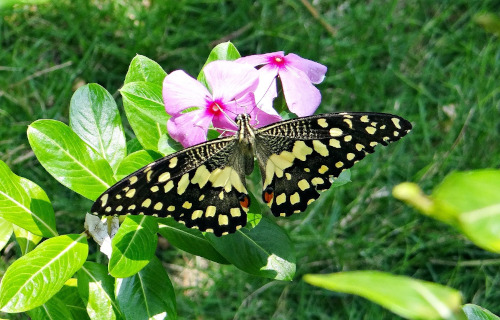
Lime Butterfly Facts
- Our next choice for inclusion in this gathering of 4 Awesome Australian Butterflies is the dazzling invertebrate known as the Lime Butterfly.
- This gorgeous creation of evolution is most often referred to by the descriptive common name due to its appearance. Yet it has other titles, used in various parts of its range. They include such terms as lime swallowtail and lemon butterfly, among others.
- Inside the scientific community, however, it’s likely much better known by its technical name. Thankfully for the layperson, that’s a comparatively simple one to pronounce. That’s because the invertebrate holds the official moniker of the Papilio demoleus.
- The beautiful Lepidoptera received that name due to the efforts of Carl Linnaeus. The eminent Swedish zoologist and botanist recorded the first official recognition of the creature as a separate and distinct species. That noteworthy deed occurred in 1758.
- The common name refers to its feeding habits. Regardless of the term one chooses to employ, however, it remains an amazing species. Among the reasons for this is the fact that this wonder of Nature also hosts an impressive six acknowledged subspecies.
- Fortunately, the marvelous Lime Butterfly appears to have a population base that’s both stable and sufficient. That pleasant fact also seems to hold true throughut the entirety of its native range. The IUCN thus presently has no listing for it on the Red List.
- The marvel of Nature nevertheless should be considered to be facing several potential threats to its existence, at least. Like many of its kind, most of these stem from the actions of humans. They include such perils as habitat loss and climate change.
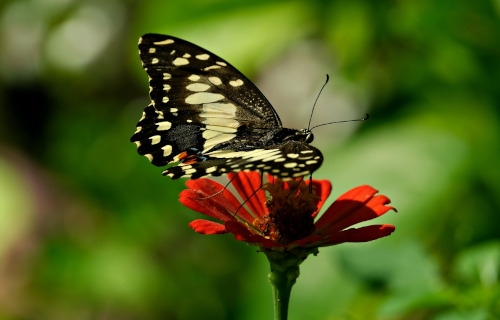
Lime Butterfly Physical Description
The stunning Lime Butterfly understandably captures the attention of those who encounter one. But the Arthropod does so due to more than its beauty. That’s true given the fact that, in addition to that visual appeal, it’s also a moderately large variety of butterfly.
It also stands out from its peers in another way. That’s because, unlike most relatives, it displays virtually no easily noticeable degree of the physiological characteristic of sexual dimorphism. Distinguishing the genders is thus extremely difficult for most observers.
A fully mature adult of both genders attains an average wingspan measuring between 3.2 – 3.9 in (8 – 10 cm). The sheer size of the wings, though, certainly isn’t the only distinctive feature of the insect. Unlike most swallowtails, this one does not display a prominent tail.
Its wings also manifest an intriguing shape. The forewing of both genders has an elongated structure to it. The hindwing of the beautiful Lepidoptera additionally possesses a notably rounded shape to it. The combination clearly makes for a visually striking package.
The wings of the Lime Butterfly also display a fascinating pattern of color. The upper surface presents a background of deep black. That’s broken by an irregular yellow band, broken on the forewing. Multiple yellow spots and a red spot with blue edging also shows on each wing.
The underside, though, displays a different pattern. A background of black appears near the tips of the wings only. The rest of the underside has a background of white or light yellow. Multiple black lines and yellow-orange spots compliment this remarkable coloring.
- Kingdom: Animalia
- Phylum: Arthropoda
- Class: Insecta
- Order: Lepidoptera
- Family: Papilionidae
- Genus: Papilio
- Species: P. demoleus
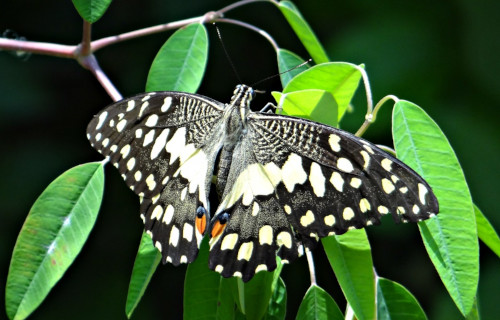
Lime Butterfly Distribution, Habitat, and Ecology
The magnificent Lime inhabits a comparatively broad expanse of the globe. In fact, it has the greatest range of any known variety of swallowtail butterfly. The precise location of that zone of habitation might surprise many people, though. It’s native to Australia and Asia.
In Asia, it appears as far west as Syria and Iraq. To the south, though, it’s present as far as the Philippines and Indonesia. In Australia, it’s present in most of the region, including New Guinea and Lord Howe Island. It has also now spread to many Pacific Ocean islands.
Nature provided this marvel with a high degree of adaptability regarding its habitat. Some of the regions in which it makes its home include areas of evergreen and semi-evergreen forests, fallow lands, savannahs, and even residential areas such as small gardens.
It’s also prevalent at a wide range of altitudes. In India, the creature is found as high as 7,000 ft (2,100 m) above sea level. The remarkable insect does show a decided preference for the presence of either riverbeds or streams in the areas in which it chooses to live, though.
The Lime Butterfly evolved behavioral patterns common to members of its Family. It usually rests with its wings spread wide. It also rarely flies more than 3.3 ft (1 m) above the ground. During the heat of the day, however, it spends much of its time resting on damp areas.
The female lays her eggs singly, usually on the top of a leaf. The larvae later feed on a number of local plant species. Both these and the adults fall prey to many predators, such as spiders and birds. It has the shortest lifespan among its kind, with adults living only 4-7 days.
African Monarch
African Monarch Facts
- Closing out this compendium of 4 Awesome Australian Butterflies we give you the beautiful Lepidoptera named the African Monarch.
- This magnificent species most frequently goes by the descriptive, as well as somewhat informative, common name we’ve used here. Yet, it also has several alternate names. These include the African queen, and, surprisingly, the plain tiger.
- Scientific professionals, however, such as researchers, typically refer to the invertebrate by its official name. That’s somewhat difficult to pronounce, though, for non-professionals. That’s because it bears the technical moniker of Danaus chrysippus.
- It further received that name due to the efforts of the renowned Swedish researcher, Carl Linnaeus. He accomplished the first formal recognition of the insect as a separate and distinct species. This scientifically noteworthy event occurred in the year 1758.
- Regardless of the term one chooses to use when referring to it, though, it’s a remarkable beauty. A total of three known subspecies also exist. Intriguingly, these share the same range of habitation. It’s truly a marvelous work of Nature and evolution.
- The stunning African Monarch also stands out for another reason. That’s because, unlike many species, it appears to be maintaining a population base that’s both sizeable and stable. This trend further seems to hold true throughout the entirety of its range.
- The IUCN, therefore, presently lists the Arthropod as Least Concern on its Red List. The creature nevertheless faces potential threats to its existence. Habitat loss due to human expansion qualifies as one. Its greatest danger, though, is likely climate change.
African Monarch Physical Description
The remarkable African Monarch impresses those who encounter it with its attributes. Sheer physical size, however, isn’t among the qualities on that particular list. That’s due to the fact that, regardless of its other notable aspects, it ranks as a medium-sized butterfly.
Mature adults attain an average wingspan measuring between 2.8 – 3.1 in (7 – 8 cm). Like many Arthropods, it also displays a slight degree of the physiological characteristic of sexual dimorphism. In its case, though, this trait does not manifest in terms of sheer size.
Males of this insect develop pronounced scent glands, which the female lacks entirely. With the exception of this physical structure, the genders appear virtually indistinguishable. The bodies of both genders also display a basic black shade, with many white spots.
The difference in overall appearance is further augmented, though, by the exact patterns of color. That’s due to the fact that precise combinations vary between individuals, sometimes quite significantly. Certain basic patterns of coloration do remain, however.
Both the upper and lower wings of the African Monarch display a predominantly bright orange hue. On the upperside, the tips of the forewing manifest a black border. White spots also appear there. The hindwing displays the black border, but without the spots.
The underside of the wings also presents a principally orange shade. Here, though, it’s a somewhat lighter shade. The same black border appears, but both wings also have white spots there. The hindwing also presents three small black spots around a central wing cell.
- Kingdom: Animalia
- Phylum: Arthropoda
- Class: Insecta
- Order: Lepidoptera
- Family: Nymphalidae
- Genus: Danaus
- Species: D. chrysippus
African Monarch Distribution, Habitat, and Ecology
Fortunately, for those who appreciate Nature, the dazzling African Monarch apparently evolved as native to a relatively broad swathe of the globe. As the common name itself clearly indicates, this zone of habitation includes virtually the entire continent of Africa.
Its presence isn’t restricted solely to that region of the world, however. That’s because it also appears in an impressive array of other areas. This includes much of Asia, including all of the Indian subcontinent. The insect also appears in Australia, and some Pacific islands!
It further enhances its survival capability by displaying an impressive adaptability in regards to its precise habitat. It does nonetheless demonstrate a preference for one specific type of habitat. The intrepid insect demonstrates a strong fondness for arid, open areas.
Yet, due to its flexibility in terms of where it lives, it also makes appearances in a wide varity of habitats. These include such areas as mountains, deciduous forests, and even deserts and gardens. It seems comfortable at altitudes ranging from sea level to 4,900 ft (1,494 m).
As often happens in Nature, the delicate beauty of the African Monarch conceals a rather surprising secret. Despite its physical fragility, it has few natural predators. That’s due to the fact that its tiny body contains high levels of toxic compounds, called cardenolides.
These originate with its diet. The adults consume nectar from various local flowering plants. The larval form, however, feeds mainly on several plants, but most especially Milkweed. The toxins then accumulate in its body, making it unpalatable to most predators.

4 Awesome Australian Butterflies
We hope that each of you enjoyed reading, and hopefully learning from, this article we’ve written about these 4 Awesome Australian Butterflies. It’s also our hope that doing so has left you with either a new or renewed appreciation for such wonders of Nature.
Unfortunately, however, many of their kindred around the world now find themselves facing strong threats to their continued existence as a species. Many of those dangers, in fact, stem from the actions of mankind. We must do all we can to protect and preserve them all.
Check out our other articles on 5 Fabulous Mammals of Florida, Spectacular Dolphins Throughout Our World, 3 Amazing North American Amphibians, The Mighty Tornado
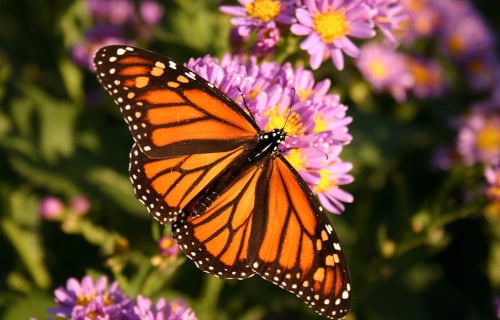
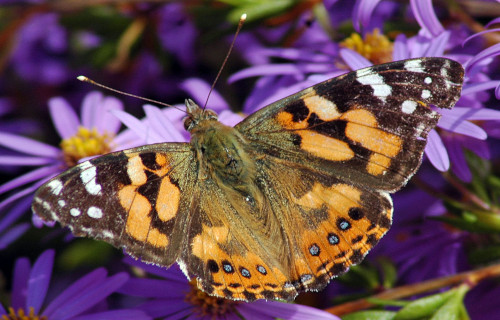
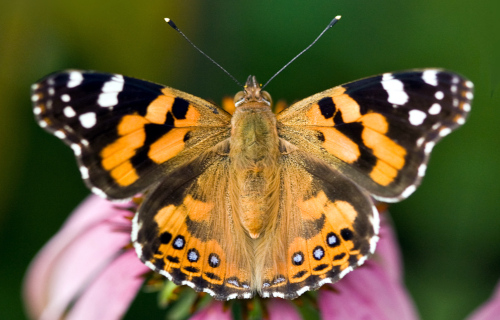
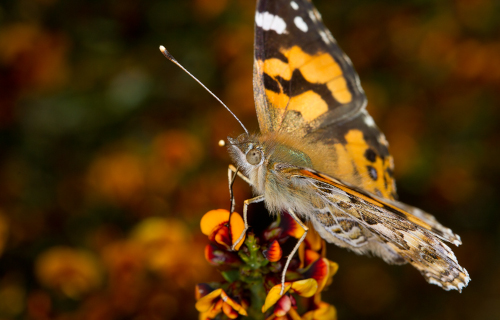
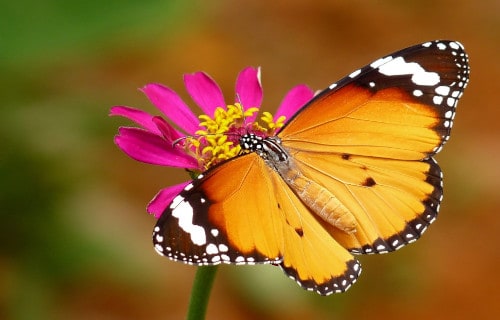
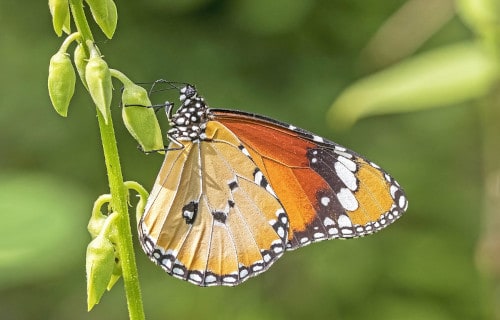









Leave a Reply